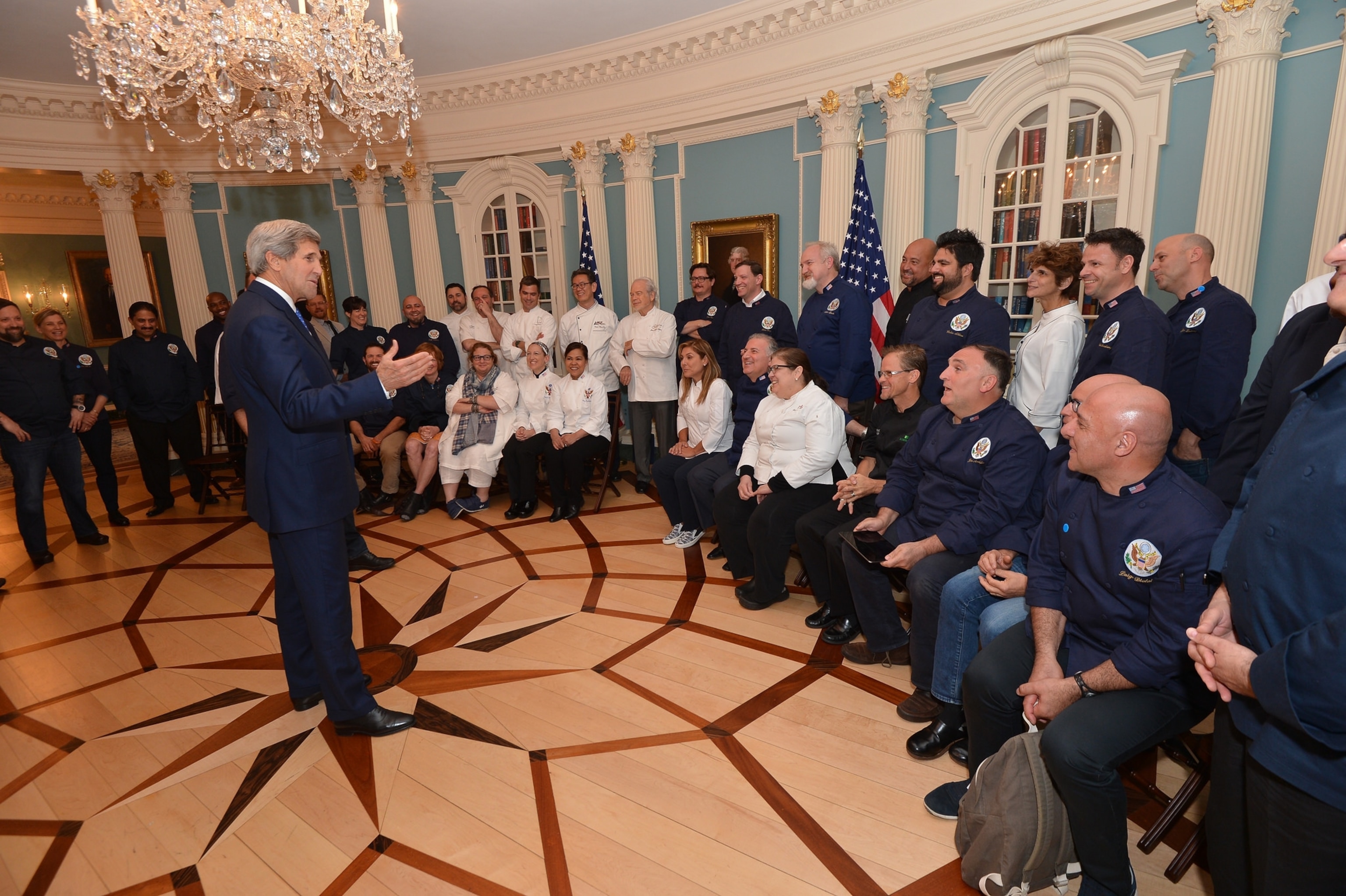
Culinary Diplomacy Is On America’s Menu
This United States’ most successful export is culture, and our most quickly developing cultural space is the culinary arts. Whatever your personal opinion is of action movies, or hip-hop music, or baseball, or gourmet hamburgers, these cultural icons represent America’s best offerings to a lot of the world’s citizens.
The State Department, which oversees America’s relations overseas, has long understood that culture plays a powerful role in diplomacy. It’s why we have arts diplomacy, sports diplomacy, and—perhaps most compellingly—culinary diplomacy.
Thomas Jefferson (our first Secretary of State) once ordered Virginia hams sent to him during his time as Minister of France, to give him the means to share the new world’s creative techniques with foreign dignitaries, as well as the French chefs who had mastered pork for centuries. Perhaps our burgeoning food culture could convince societies steeped in their own traditions of America’s goodwill and value.
In 2012, this practice became a program when then-Secretary of State Hillary Clinton launched the Diplomatic Culinary Partnership, elevating “the role of culinary engagement in America’s formal and public diplomacy efforts.” And this week when current Secretary John Kerry gathered 50 chefs, ambassadors, and other diplomats in a ceremonial room overlooking Washington’s monuments, he continued a country-long tradition of using food to smooth the way for international relations.
The gathering celebrated the chefs’ work acting as resources for diplomacy, and launched them as unofficial ambassadors to the World Expo on food in Milan, opening on May 1. As Kerry said, “You can make connections around a dinner table you can’t make around a conference table.”
In partnership with the James Beard Foundation, American chefs working with the Diplomatic Culinary Partnership can travel abroad in conjunction with the State Department to share food and engage with everyone from top-level decision-makers to everyday citizens. Chefs appear on television shows, make public appearances, and go to schools and underserved communities, in addition to making formal calls on embassies. Countries already visited include Pakistan, Columbia, Korea, Algeria, and the Czech Republic.
Chefs can also participate in the U.S., making meals for visiting foreign leaders. Recently “Top Chef” alum and D.C. restaurateur Mike Isabella prepared a meal in honor of the president of Afghanistan and his delegation.
In December, foreign diplomats gathered in D.C. for a screening of the film, “The Hundred Foot Journey,” about an Indian family who opens an ethnic restaurant in the French countryside across the street from a haute-cuisine restaurant. In conjunction with the screening, I moderated a panel of chefs and the film’s actors and producer about the power of food to bring cultures together. Chef Art Smith told of his life-changing travels to Israel and Palestine with the program, bringing young chefs from both regions to cook and eat together.
“There are no angry people,” Smith concluded. “Just hungry people.”
As with the National Park Service providing leases to farm on government land, the State Department is creatively leveraging existing, available non-government resources to create brand-new government assets. This genre is some of the most exciting work happening in government today.
Ambassador Peter A. Selfridge says: “In particular, the Diplomatic Culinary Partnership directly supports the President’s Executive Order to increase international tourism by highlighting regional American cuisines and foods, attracting new tourists to the U.S. and promoting the diversity of American food culture.” Selfridge, the Chief of Protocol who runs the program out of his office, notes that by promoting American exports, it also supports U.S. businesses.
As Kerry said this week, “Our chefs have actually become culinary ambassadors…. They have built bilateral relationships in ways that an assistant secretary of state or myself wouldn’t necessarily have the time to do or be able to do.”
To see these culinary ambassadors in action, head to Milan on July 21 for the American Chef Rally. Our pavilion is directly across from Iran’s, so diplomacy is definitely on the menu.





